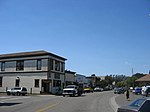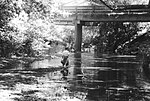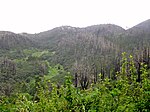Olema, California

Olema (Miwok: Olemaloke) is an unincorporated community in Marin County, California. It is located on Olema Creek 2.25 miles (3.6 km) south-southeast of Point Reyes Station, at an elevation of 69 feet (21 m).Olema is along State Route 1 at its intersection with Sir Francis Drake Boulevard, on the eastern edge of the Point Reyes Peninsula in the western part of Marin County. The name Olema comes from the Coast Miwok placename meaning "coyote valley". Olema was once thought to be the epicenter of the 1906 San Francisco earthquake due to the huge fault rifts still visible via a nearby hiking path. There are historical references to this in and around the town, including at shops and restaurants. However, more recent evidence suggests that a location near Daly City is more likely the epicenter.Olema was also the title subject of the late-1960s country-rock song, "Hippie from Olema", The Youngbloods' rejoinder to Merle Haggard's "Okie from Muskogee". The Olema post office opened in 1859, closed in 1860, and re-opened in 1864.
Excerpt from the Wikipedia article Olema, California (License: CC BY-SA 3.0, Authors, Images).Olema, California
Shoreline Highway,
Geographical coordinates (GPS) Address Nearby Places Show on map
Geographical coordinates (GPS)
| Latitude | Longitude |
|---|---|
| N 38.040833333333 ° | E -122.78805555556 ° |
Address
Point Reyes Seashore Lodge
Shoreline Highway 10021
94950
California, United States
Open on Google Maps







